Biblical Archaeology: The Fall of Babylon Foretold
Explore the connection between the Nabonidus Chronicle and Isaiah's prophecy regarding Babylon's fall. Discover highlights from the book "Biblical Archaeology, Part IV."
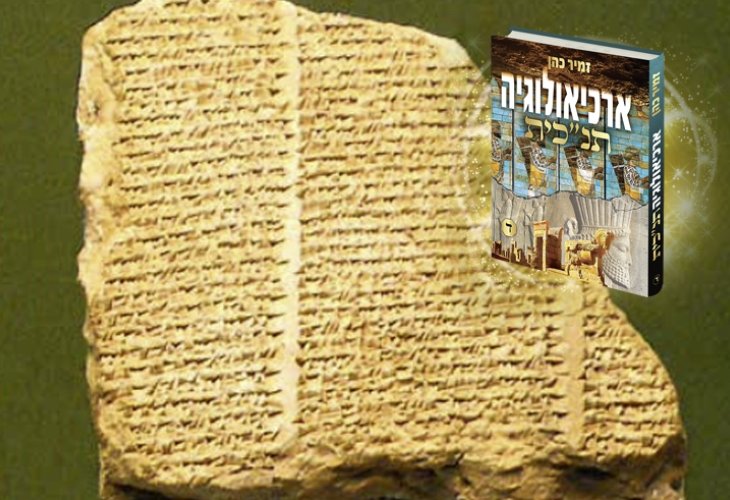 "Nabonidus Chronicle," which criticizes the Babylonian king's actions. It was found in Babylon and dates to the year the city was taken by Persian and Median armies. (Photo: Dr. Rivka Labron)
"Nabonidus Chronicle," which criticizes the Babylonian king's actions. It was found in Babylon and dates to the year the city was taken by Persian and Median armies. (Photo: Dr. Rivka Labron)A reliable archaeological source for the events during the final years of the Babylonian empire is the Babylonian inscription known as the "Nabonidus Chronicle." Written by an independent Babylonian scribe on a clay tablet, it chronicles an extensive period, from Nabonidus' reign to the time when Babylon was under Persian and Median rule. Acquired by the British Museum from antique dealers in 1879, it is believed to have originated amid the ruins of Babylon.
The content of the inscription notes Nabonidus' extended stay in Tayma in the Arabian desert, Cyrus' invasion of Babylon, the Babylonians' failures against Cyrus' army, the capture of Sippar, and then the "battle-less" capture of Babylon, as the inscription describes.
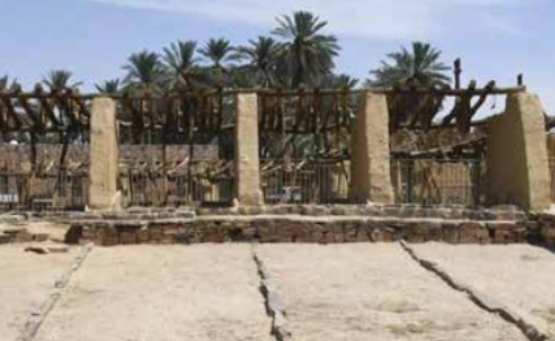 Ancient well in Tayma city (Saudi Press Agency)
Ancient well in Tayma city (Saudi Press Agency)
The Nabonidus Inscription
Another archaeological source detailing the Babylonian empire's last years is the "Nabonidus Inscription." This clay tablet was found in Babylon in 1880 and acquired by archaeologist Hormuzd Rassam for the British Museum, where it remains today. The Babylonian text on this tablet is from around 539 BCE, when Babylon fell to Cyrus. The content, resembling a long poem, provides critical historical insight while mocking Nabonidus' actions, particularly in relation to Babylonian religious practices:
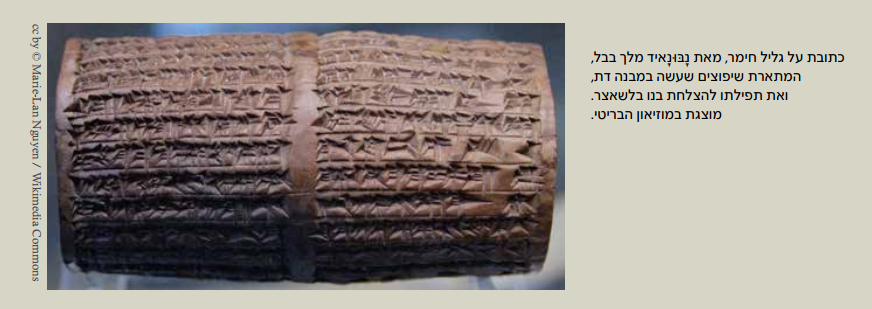 (cc by © Marie-Lan Nguyen / Wikimedia Commons)
(cc by © Marie-Lan Nguyen / Wikimedia Commons)"Nabonidus... embarked on a long journey... to Tayma... where he built a beautiful palace...
He stood before the assembled crowd to praise himself, claiming: 'I am wise, knowledgeable, witnessing the occult. Even though I cannot write with a stylus, I have seen hidden things...'.
Yet he confusingly altered the worship rituals, mixing prophecy sites... he canceled vital worship tasks... and spoke heresies..."
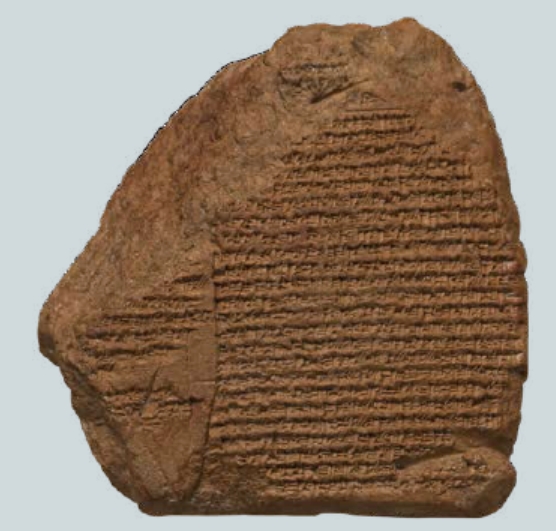 The Nabonidus Chronicle, describing important events during and after the reign of the Babylonian king. It is believed to have been found among the ruins of Babylon
The Nabonidus Chronicle, describing important events during and after the reign of the Babylonian king. It is believed to have been found among the ruins of Babylon
Babylon After the Persian Conquest
Isolated Babylonian uprisings against Persian rule were unsuccessful and were quickly suppressed. Alexander the Great captured Babylon from the Persians in 331 BCE. After his death, Babylon came under the Seleucid Empire, founded by Seleucus I, a general of Alexander's army.
The Parthian Empire, which rose to power over Persia by the mid-third century BCE, gradually took parts of the ancient Near East, including Babylon. In Babylon, battles occurred between Parthians and Greeks, and later with Romans.
When the Sasanian Empire was established in Persia in 224 CE, it ruled Babylon until the Arab-Islamic conquest ended Persian rule in 651 CE.
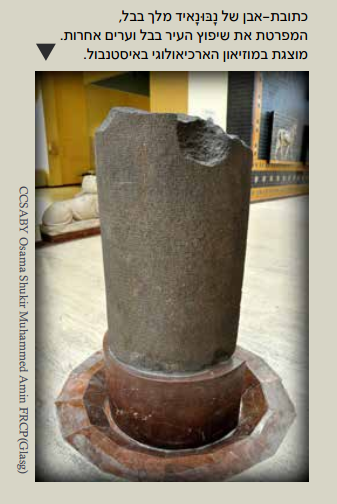 (CCSABY Osama Shukir Muhammed Amin FRCP(Glasg).
(CCSABY Osama Shukir Muhammed Amin FRCP(Glasg).
The Ruins of Babylon
After the Persian conquest, the once-glorious and prosperous city of Babylon declined. It exchanged hands among different conquerors until it was completely destroyed and turned into vast ruins, some of the largest in the Near East.
The ruins are located not far from Baghdad, near the modern Iraqi city of Al-Hilla. One of the city mounds is called "Tell Babil," preserving the ancient city's name.
The city has not been rehabilitated since. The Iraqi government has reconstructed parts of its ruins for display purposes only, with no permanent residents. During Saddam Hussein's reign in Iraq, he built himself a palace atop a hill in the city, but lived there briefly. The site became a museum instead. Researchers noted: "This city, which was the capital of various empires during the second and first millennia BCE, today remains nothing but an expansive ruin field along the Euphrates River." Prof. Leo Oppenheim, an expert on the ancient Near East, wrote of Babylon: "Its ruins, as envisioned by the prophet [Isaiah], are shockingly and powerfully described (Isaiah 13:20-22), echoing in the accounts of many travelers who visited these ruins."
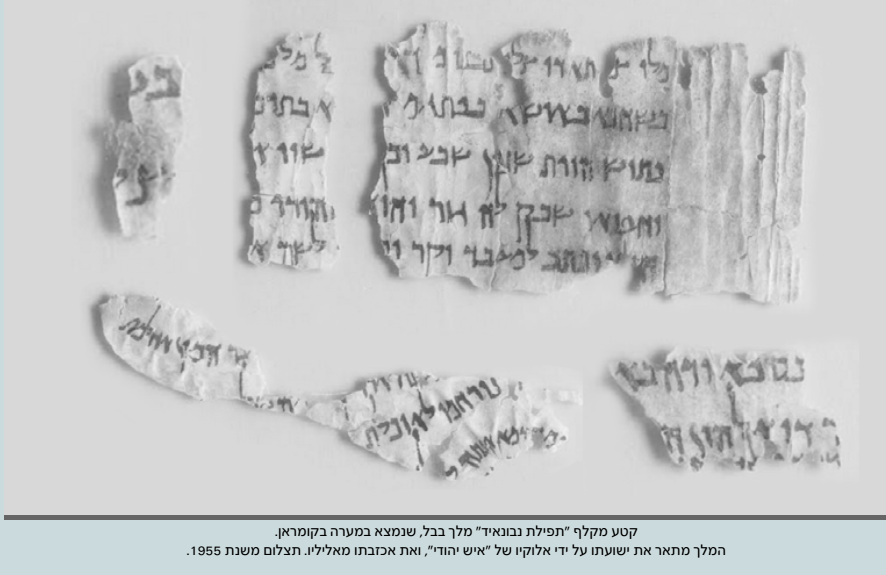
The Jewish traveler Rabbi Benjamin of Tudela visited Babylon's ruins in the twelfth century and wrote in his book: "From there [a day's journey] to Babylon, which is ancient Babylon in ruins, thirty miles of its ruins. Nebuchadnezzar's palace is still present, in ruins, and people fear entering it due to the snakes and scorpions inside... From there, four miles to the Tower built by the generation of the Tower of Babel."
Rabbi Benjamin's report of "snakes and scorpions" in Nebuchadnezzar's ruined palace in Babylon,
and people’s fear of entering the palace complex because of this, attests to the fulfillment of the biblical prophets' predictions about Babylon’s total desolation: "No man shall reside there, and no human shall pass through."
Significant damage was done to the city's architectural remnants in 2003 by foreign armies during the Second Gulf War.
Archaeological excavations have been conducted in Babylon's ruins by researchers from various countries, ranging from the early nineteenth century to the close of the twentieth century.
In certain areas, the nearby Euphrates River flooded the city's ruins, rendering them inaccessible. Researchers' ability to delve deeply into the sands containing the city's ruins was also hampered by rising groundwater that hindered excavations.
Archaeological finds retrieved from the ruins are displayed in museums worldwide, impressing all who see the past grandeur of Babylon, which has faded into oblivion.
The prophets' predictions about Babylon's eternal ruin: "It will never be inhabited again, nor will it be settled from generation to generation," "For it will become eternal desolation," have entirely come true.
Prophecies of Babylon's Destruction
The Prophets of Israel—Isaiah, Jeremiah, and Daniel—foretold the conquest of Babylon by the Persians and its complete destruction as a divine punishment for its cruelty to the people of Israel, the destruction of the Temple, and its widespread idolatry.
These prophecies were delivered clearly and in detail, many years before they unfolded in reality, when the visible reality was entirely different.
The prophet Isaiah predicted this during the Assyrian empire's time when Babylon was not yet a significant force in the ancient Near East. Here are some of his words describing the desolation that would dominate grand Babylon after its fall:
"And Babylon, the jewel of kingdoms, the pride of the Babylonians' grandeur,
will be overthrown by Hashem like Sodom and Gomorrah.
It will never be inhabited or lived in for generations to come
and no Arab will pitch his tent there [even nomads will not settle there, due to its destruction]
or shepherds make their flocks lie down there [not even suitable for pasture]".
Only desert creatures will lie there, and houses will be filled with owls,
ostriches will live there, and goat-demons will leap there.
Hyenas will howl in her strongholds,
and jackals in her luxurious palaces.
Her time is at hand, and her days will not be prolonged."
Jeremiah also depicted Babylon's future total ruin, long before it occurred:
"Thus says Hashem, behold, I will stir up a destructive wind against Babylon and against those who live in Leb Kamai.
And I will send foreigners to Babylon who will scatter her, empty her land, for they will be against her all around on the day of disaster...
Suddenly Babylon has fallen and is shattered...
The news of Babylon’s capture spreads...
Her cities turn to eerie desolation, a dry land, and desert, where no one resides, and no one passes through.
...Until this place is cut off, so it remains uninhabited, from man and beast because it will be desolation forever...
And Babylon will become mounds, a den of jackals, an object of horror and shaking without an inhabitant."
Battles in Babylon's Lakes
Babylon has always had numerous lakes, as mentioned by the prophet Jeremiah:
"To those who dwell in Babylon, who dwell on many waters."
Along these lakes grow thick reeds and rushes, much like today.
Some battles between the Persian-Median army and the Babylonian forces took place on these waters, ending in the Babylonians' defeat and capture, as foretold by Jeremiah years before:
"To announce to Babylon's king that his city is captured from every side.
The water crossing points have been seized,
and the lakes have been set aflame with fire, and its soldiers have panicked."
To purchase the book "Biblical Archaeology, Part IV," click here.

